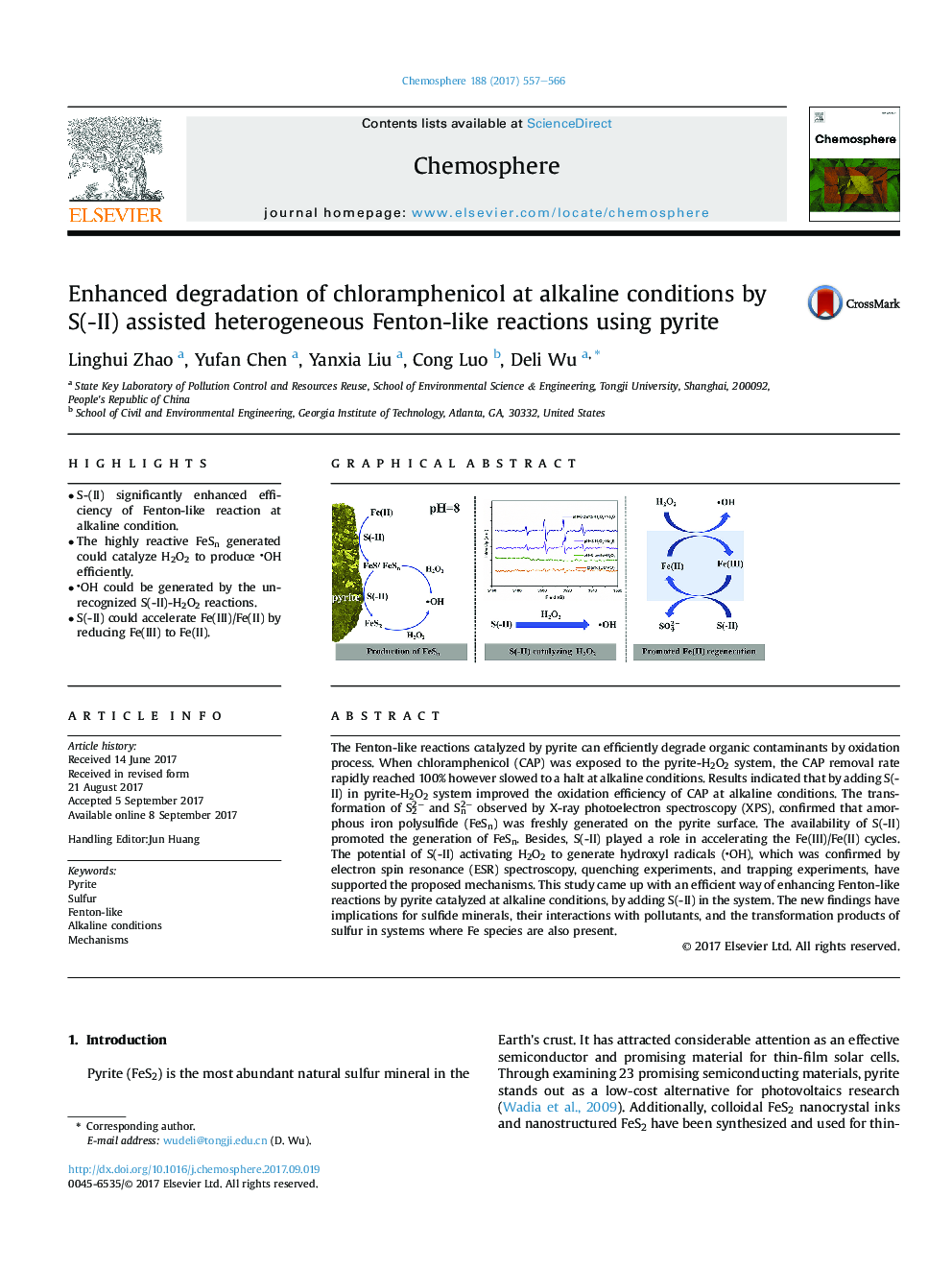| Article ID | Journal | Published Year | Pages | File Type |
|---|---|---|---|---|
| 5745849 | Chemosphere | 2017 | 10 Pages |
â¢S-(II) significantly enhanced efficiency of Fenton-like reaction at alkaline condition.â¢The highly reactive FeSn generated could catalyze H2O2 to produce OH efficiently.â¢OH could be generated by the unrecognized S(-II)-H2O2 reactions.â¢S(-II) could accelerate Fe(III)/Fe(II) by reducing Fe(III) to Fe(II).
The Fenton-like reactions catalyzed by pyrite can efficiently degrade organic contaminants by oxidation process. When chloramphenicol (CAP) was exposed to the pyrite-H2O2 system, the CAP removal rate rapidly reached 100% however slowed to a halt at alkaline conditions. Results indicated that by adding S(-II) in pyrite-H2O2 system improved the oxidation efficiency of CAP at alkaline conditions. The transformation of S22â and Sn2â observed by X-ray photoelectron spectroscopy (XPS), confirmed that amorphous iron polysulfide (FeSn) was freshly generated on the pyrite surface. The availability of S(-II) promoted the generation of FeSn. Besides, S(-II) played a role in accelerating the Fe(III)/Fe(II) cycles. The potential of S(-II) activating H2O2 to generate hydroxyl radicals (OH), which was confirmed by electron spin resonance (ESR) spectroscopy, quenching experiments, and trapping experiments, have supported the proposed mechanisms. This study came up with an efficient way of enhancing Fenton-like reactions by pyrite catalyzed at alkaline conditions, by adding S(-II) in the system. The new findings have implications for sulfide minerals, their interactions with pollutants, and the transformation products of sulfur in systems where Fe species are also present.
Graphical abstractDownload high-res image (338KB)Download full-size image
